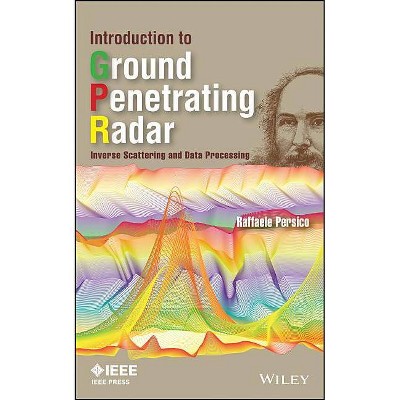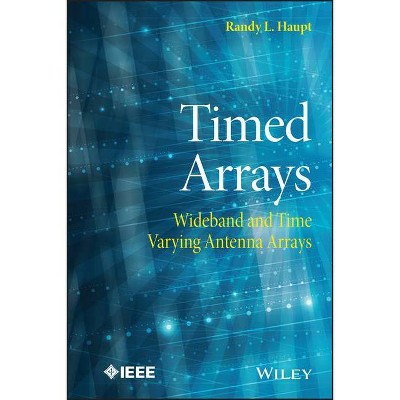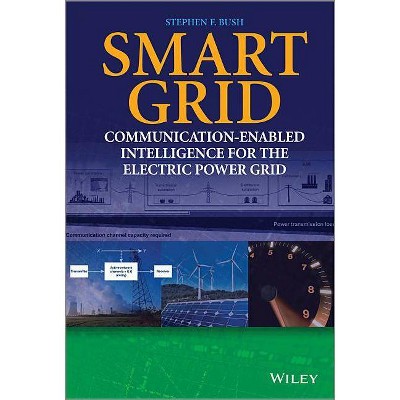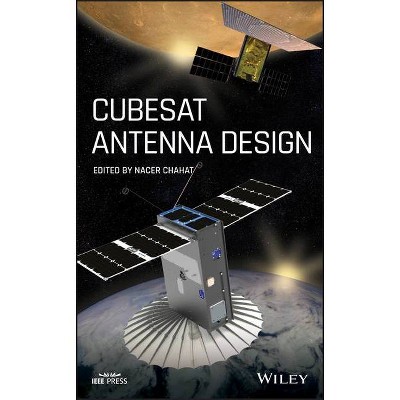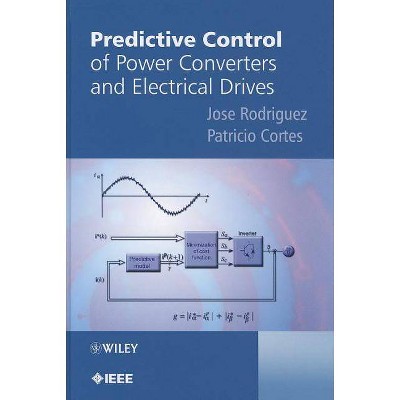Introduction to Modern Planar Transmission Lines - (IEEE Press) by Anand K Verma (Hardcover)
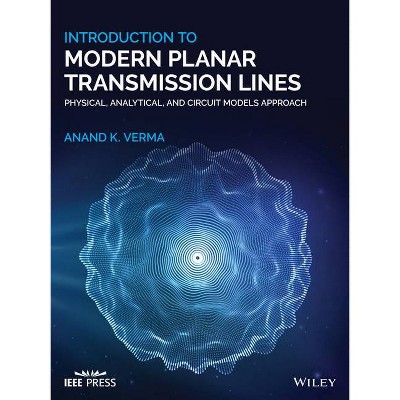
Similar Products
Products of same category from the store
AllProduct info
<p/><br></br><p><b> About the Book </b></p></br></br>"The planar transmission lines form the core of modern high-frequency communication, computer, and other related technology. The subject has come up to the present level of maturity over the past 3 to 4 decades. The planar transmission lines are used not only as interconnects on the PCB board and IC chips; these are directly needed for the development of microwave and mm-wave components in form of the microwave integrated circuits (MIC). The type of planar transmission lines i.e. their physical structures and material medium have been changing with the growth of technology in many other disciplines. Such efforts during recent years propelled the MIC to move in many exotic directions- MMIC, MEMS, LTCC, use of ferroelectrics, and high-temperature superconductors, optically controlled microwave devices, non-linear planar transmission lines, DGS, EBG, and metamaterials, etc.. The researchers with varying backgrounds have contributed much to research activities. Already the divergent planar technology has contributed significantly to the advancement of high-frequency electronics and in the near future, more contribution will be made by it. The exotic planar transmission lines are not covered comprehensively in a single book. The present book is an attempt in this direction. The proposed book aims to provide a comprehensive discussion of planar transmission lines and their applications. It focuses on physical understanding, analytical approach, and circuit models for planar transmission lines and resonators in the complex environment. The present book has evolved from the lecture notes, workshop, seminar presentation, and invited lectures delivered by the author at many universities and R&D centers. Some chapters were also initially written for my Ph.D. students to help them to understand the topics. Finally, it has evolved from notes prepared by the authors as a scheme for the self-study. The author started his academic career after 17 years of professional experience in the field of electrical engineering, broadcast transmitters, and satellite communication."--<p/><br></br><p><b> Book Synopsis </b></p></br></br><p><b>P</b><b>rovides a comprehensive discussion of planar transmission lines and their applications, focusing on physical understanding, analytical approach, and circuit models</b></p> <p>Planar transmission lines form the core of the modern high-frequency communication, computer, and other related technology. This advanced text gives a complete overview of the technology and acts as a comprehensive tool for radio frequency (RF) engineers that reflects a linear discussion of the subject from fundamentals to more complex arguments.</p> <p><i>Introduction to Modern Planar Transmission Lines: Physical, Analytical, and Circuit Models Approach</i> begins with a discussion of waves on transmission lines and waves in material medium, including a large number of illustrative examples from published results. After explaining the electrical properties of dielectric media, the book moves on to the details of various transmission lines including waveguide, microstrip line, co-planar waveguide, strip line, slot line, and coupled transmission lines. A number of special and advanced topics are discussed in later chapters, such as fabrication of planar transmission lines, static variational methods for planar transmission lines, multilayer planar transmission lines, spectral domain analysis, resonators, periodic lines and surfaces, and metamaterial realization and circuit models.</p> <ul> <li>Emphasizes modeling using physical concepts, circuit-models, closed-form expressions, and full derivation of a large number of expressions</li> <li>Explains advanced mathematical treatment, such as the variation method, conformal mapping method, and SDA</li> <li>Connects each section of the text with forward and backward cross-referencing to aid in personalized self-study</li> </ul> <i>Introduction to Modern Planar Transmission Lines</i> is an ideal book for senior undergraduate and graduate students of the subject. It will also appeal to new researchers with the inter-disciplinary background, as well as to engineers and professionals in industries utilizing RF/microwave technologies.<p/><br></br><p><b> From the Back Cover </b></p></br></br><p><b>Provides a comprehensive discussion of planar transmission lines and their applications, focusing on physical understanding, analytical approach, and circuit models</b> <p>Planar transmission lines form the core of the modern high-frequency communication, computer, and other related technology. This advanced text gives a complete overview of the technology and acts as a comprehensive tool for radio frequency (RF) engineers that reflects a linear discussion of the subject from fundamentals to more complex arguments. <p><i>Introduction to Modern Planar Transmission Lines: Physical, Analytical, and Circuit Models Approach</i> begins with a discussion of waves on transmission lines and waves in material medium, including a large number of illustrative examples from published results. After explaining the electrical properties of dielectric media, the book moves on to the details of various transmission lines including waveguide, microstrip line, co-planar waveguide, strip line, slot line, and coupled transmission lines. A number of special and advanced topics are discussed in later chapters, such as fabrication of planar transmission lines, static variational methods for planar transmission lines, multilayer planar transmission lines, spectral domain analysis, resonators, periodic lines and surfaces, and metamaterial, metalines, and metasurfaces realization and circuit models. <li>Emphasizes modeling using physical concepts, circuit-models, closed-form expressions, and full derivation of a large number of expressions</li> <li>Explains advanced mathematical treatment, such as the variation method, conformal mapping method, and SDA</li> <li>Connects each section of the text with forward and backward cross-referencing to aid in personalized self-study</li> <p><i>Introduction to Modern Planar Transmission Lines</i> is an ideal book for senior undergraduate and graduate students of the subject. It will also appeal to new researchers with the inter-disciplinary background, as well as to engineers and professionals in industries utilizing RF/microwave technologies.<p/><br></br><p><b> About the Author </b></p></br></br><p><b>ANAND K. VERMA, PhD, </b> is an Adjunct Professor in the School of Engineering, Macquarie University, Sydney. Formerly, he was Professor and Head of the Department of Electronic Science, South Campus, University of Delhi. He has been Visiting Professor at Otto-Van-Guericke University, Magdeburg, Germany (2002, 2002-2003), and Nanyang Technological University, Singapore as a Tan Chin Tuan Scholar (2001). He holds a German Patent on microstrip antenna. He has organized and attended many International Symposia and Workshops and conducted short-term courses and delivered invited lectures at the research institutes in India and in several countries. He was also chairman of the TPC, APMC-2004, Delhi. Professor Verma has published over 250 papers in international journals and in the proceedings of international and national symposia.
Price History
Price Archive shows prices from various stores, lets you see history and find the cheapest. There is no actual sale on the website. For all support, inquiry and suggestion messages communication@pricearchive.us

